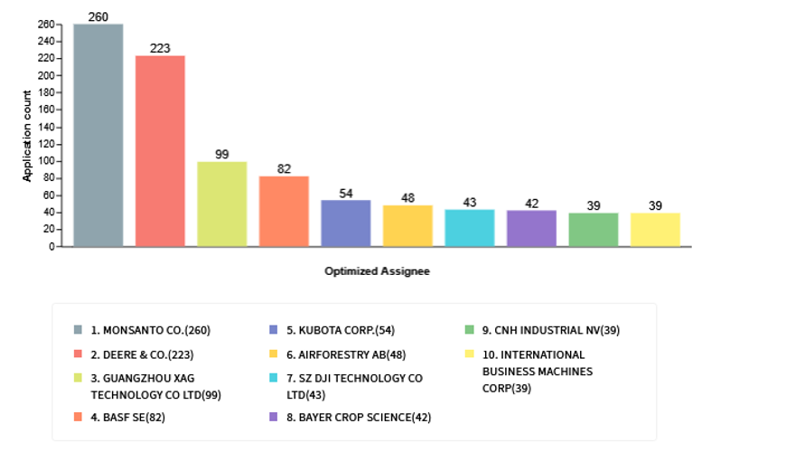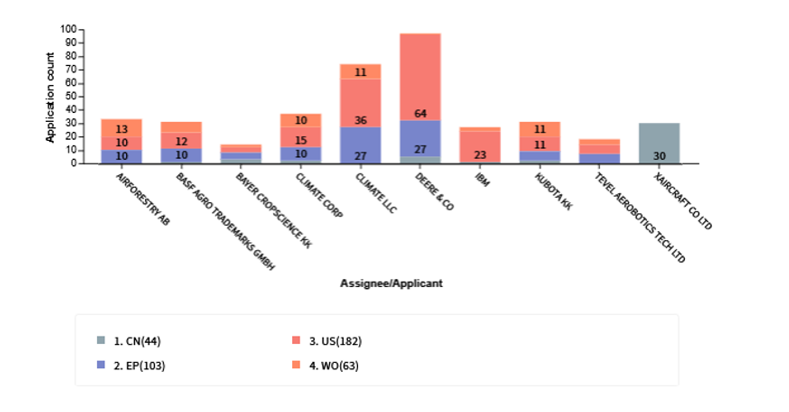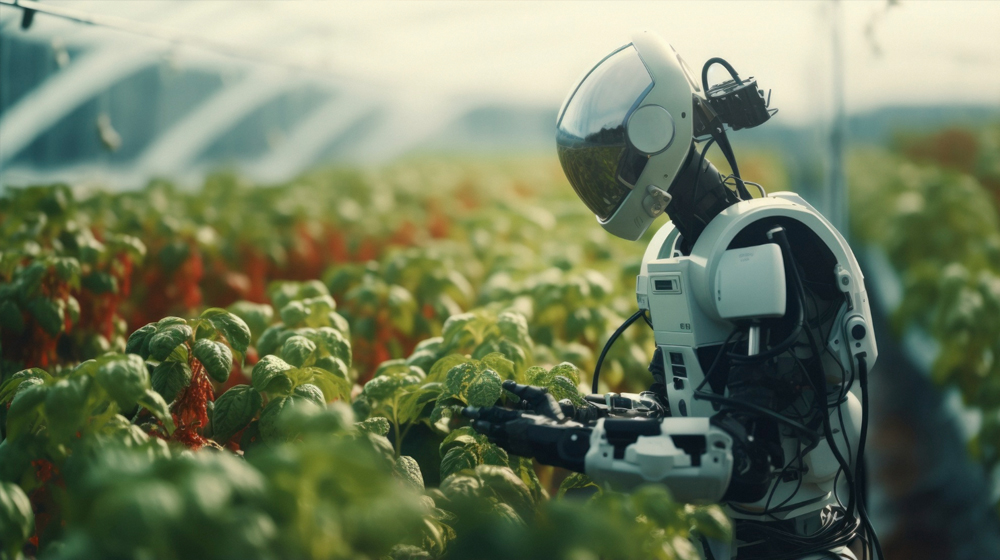Cultivating Innovation the Landscape of Agricultural Patents
Introduction
In the face of rising global food insecurity, climate volatility, and resource scarcity, agriculture is undergoing a profound transformation. The United States—armed with vast agricultural landscapes and a relentless spirit of innovation—has positioned itself as a global leader in AgTech. From precision farming and bioengineered seeds to AI-powered analytics and autonomous machinery, the American agriculture sector is no longer just about plows and tractors; it’s about patents, pixels, and predictive intelligence.
At the core of this revolution lies a powerful driver intellectual property, particularly patents. These legal tools not only safeguard breakthrough technologies but also stimulate research, attract investment, and accelerate commercialization. In a highly competitive, innovation-driven market, patents act as both shield and sword—protecting proprietary inventions while enabling agri-businesses to lead the charge in global food production. This blog explores how patents are shaping the future of farming in the United States, one invention at a time.
The Rise of Agricultural Technology (AgTech)
Agricultural Technology (AgTech) represents a transformative shift in modern farming by integrating biology, engineering, and data science to enhance how food is cultivated and managed. From genetically modified crops and CRISPR-based plant editing to AI-powered soil sensors and satellite-guided irrigation, AgTech enables precision farming that boosts yields while conserving resources. Today’s farms function as intelligent, interconnected ecosystems where drones assess crop health, IoT devices provide real-time insights, and autonomous machinery performs tasks with exceptional accuracy. As global food demands and environmental concerns grow, AgTech is redefining agriculture into a sustainable, scalable, and technologically advanced industry equipped for the future.
Key Innovations Driving AgTech
Precision Agriculture
Farming meets GPS. With satellites, drones, and IoT sensors, farmers now treat each square foot of soil individually delivering the right dose of water, nutrients, and care. Think of it as Google Maps for your crops, guiding every decision with real-time precision.
Biotechnology
DNA is the new tractor. From drought-tolerant wheat to pest-resistant corn, gene editing tools like CRISPR are rewriting the genetic script of agriculture. The result? Supercharged crops built to survive, thrive, and nourish with fewer inputs.
Autonomous Equipment
Machines that farm themselves. Self-driving tractors, robotic seeders, and AI harvesters now workday and night with no coffee breaks. They don’t just replace labour—they upgrade it with speed, accuracy, and tireless consistency.
Digital Agriculture
Big data is planting the seeds of smarter decisions. With cloud-based dashboards, AI models, and mobile apps, today’s farmers get weather alerts, yield forecasts, and pest warnings—before problems even appear. It’s like having a digital twin of your entire farm in your pocket.
Controlled Environment Agriculture (CEA)
No sunlight? No soil? No problem. Vertical farms and hydroponic systems are turning urban warehouses into year-round food factories. With full control over light, humidity, and nutrients, CEA grows greens with zero seasons and maximum efficiency.
Understanding Agricultural Patents
In agriculture, where innovation drives everything from seed engineering to autonomous harvesting, patents play a crucial role as the legal foundation protecting intellectual property. They grant inventors exclusive rights—typically for 20 years—to make, use, or sell their inventions, whether it’s a genetically modified crop, an AI-powered farming algorithm, or a smart irrigation system. By safeguarding these innovations, patents encourage investment in R&D, enabling individuals, startups, corporations, and research institutions to pursue breakthrough technologies with confidence. Beyond protection, agricultural patents serve as strategic assets—facilitating licensing deals, attracting investors, enabling tech transfer, and strengthening competitive advantage in global markets. In this way, patents are not just legal tools—they are engines of progress and pillars of the AgTech economy.
Types of Agricultural Patents in the U.S.
Utility Patents
Utility patents are the most common form of protection in AgTech, covering innovative processes, machines, and biological inventions—including genetically modified seeds, gene-editing methods (like CRISPR), and precision farming technologies. These patents last 20 years and are key to protecting biotech breakthroughs in modern agriculture.
Plant Patents
Plant patents protect asexually reproduced plant varieties, such as through cuttings or grafting. Ideal for fruit trees and ornamental plants, they ensure exclusive rights for 20 years without requiring maintenance fees. These patents preserve the commercial value of uniform plant traits.
Plant Variety Protection (PVP)
Granted by the USDA, PVP certificates safeguard sexually reproduced or tuber-propagated varieties like grains or potatoes. Valid for 20–25 years, PVP strikes a balance—offering IP protection while allowing for limited seed-saving and research use under specific conditions.
U.S. Patent Trends in Agriculture

Source: Retrieved through Derwent Innovation
A consistent and significant rise in patent application publications over the five-year period from 2020 to 2024. Starting at 463 applications in 2020, the count increased steadily each year—652 in 2021, 789 in 2022, and 901 in 2023—before reaching a sharp peak of 1,433 in 2024. This upward trend reflects growing innovation activity and heightened interest in intellectual property protection, signalling a robust and expanding patent landscape.
Leading Categories of U.S. AgTech Patents
Genetically Engineered Seeds
GE seeds are among the most patented agricultural innovations in the U.S., engineered for traits like herbicide resistance, higher yields, and drought or pest tolerance. Companies like Bayer, Corteva, and Syngenta lead this space, with patents covering both the plant traits and genetic engineering methods—offering strong market exclusivity.
Automated Machinery and Drones
Patents are growing rapidly for autonomous tractors, robotic planters, and drones with imaging systems that monitor crops and detect pests. Companies like John Deere and AGCO are developing smart farming equipment that boosts efficiency and precision using GPS, AI, and real-time data.
Climate-Smart Platforms
These platforms use AI and big data to guide farming decisions based on soil health, weather, and crop status. Patents cover tools that help optimize planting and harvesting while reducing climate risks. Bayer’s Climate Corporation is a key player in this space.
CRISPR and Gene Editing Tools
CRISPR technology enables precise, non-GMO gene edits in crops for improved traits like heat resistance and better nutrition. Patents focus on editing methods and gene sequences, with key holders including the Broad Institute and Corteva, shaping the next wave of biotech crops.
Patent Giants Cultivating the Future of Farming

Source: Retrieved through Derwent Innovation
Key leaders in AgTech innovation. Monsanto Co. leads with 260 patent applications, followed by Deere & Co. with 223, showing their strong hold on agricultural IP. Guangzhou XAG Technology ranks third with 99 filings, signaling China’s growing presence in precision farming. Other notable assignees include BASF SE (82), Kubota (54), AirForestry AB (48), DJI (43), Bayer Crop Science (42), CNH Industrial, and IBM (both 39). The data reflects a dynamic mix of agrochemical, machinery, and tech companies driving innovation in modern agriculture.
Patent Filings by Leading Assignees Across Key Regions

Source: Retrieved through Derwent Innovation
The graph displays the top countries/regions by patent assignees, highlighting the distribution of filings across China (CN), Europe (EP), the U.S. (US), and WIPO (WO). Deere & Co leads with the highest number of filings (64 US, 27 EP), followed by Climate LLC (36 US, 27 EP, 11 WO) and Climate Corp (15 US, 10 EP, 10 CN). Other notable assignees include IBM, Kubota KK, and XAGRICULT CO LTD (with 30 CN filings). The U.S. dominates in total filings (182), followed by EP (103), WO (63), and CN (44), reflecting strong patent activity among American assignees in the AgTech sector.
Global Innovation Footprint
In the past five years, a total of 5,133 patent filings were recorded across major jurisdictions. China led with 1,747 filings, followed by the U.S. (1,053), Europe (506), and India (468). Other key contributors included South Korea (376), WIPO (371), Japan (254), Australia (231), and Brazil (127), highlighting both established and emerging innovation hubs worldwide.
Source: Retrieved through Derwent Innovation
The Role of Patents in Promoting Agricultural Innovation
Patents play a pivotal role in advancing agricultural innovation by providing inventors with exclusive rights to commercialize their breakthroughs, allowing them to recover substantial R&D investments that often span years and cost millions. In a high-risk, capital-intensive sector like agriculture where developing a new crop variety, biotech trait, or farming system demands rigorous trials and regulatory approvals, patents offer a legal safeguard that attracts venture capital, fosters public-private partnerships, and enables technology transfer from research institutions to real-world application.
Beyond protection, patents serve as valuable business assets that can be licensed or leveraged in strategic collaborations, ultimately accelerating the adoption of advanced AgTech solutions and reinforcing the United States’ leadership in global agricultural innovation.
Outlook What’s Next for Agricultural Patents?
As AgTech evolves, patentable innovations are expanding beyond seeds and equipment to digital intelligence, traceability, and climate resilience.
AI and Machine Learning in Crop Modelling and Automated Decision Systems
AI and ML are transforming farming by analysing data from satellites, soil, and weather to guide planting, irrigation, and pest control. Patents now focus on intelligent algorithms, monitoring platforms, and real-time decision systems.
Blockchain for Traceability and Secure Food Supply Chain Management
Blockchain ensures transparent, tamper-proof tracking of crops from seed to shelf. Patents are emerging for smart contracts, authentication systems, and digital ledgers that verify origin, sustainability, and safety.
Digital Twins of Farms for Simulation-Based Planning
Digital twins replicate farm environments to simulate scenarios and improve decisions using data from IoT, drones, and AI. Patents focus on digital twin architecture, data integration, and responsive modelling for optimized farm management.
Climate Resilience Patents to Address Global Warming
Innovations addressing extreme weather—such as flood-resistant crops, adaptive irrigation, and climate-risk modelling—are driving patents that support sustainable farming under climate stress.
AMS OSRAM Files Patent Infringement Suit Against Nature Fresh Farms
AMS OSRAM has filed a patent infringement lawsuit against Nature Fresh Farms USA Inc. in the U.S. District Court for the Northern District of Ohio, alleging unauthorized use of its proprietary LED technology in horticulture lighting products, including the Agrolux Wega Plus. The lawsuit involves seven U.S. patents covering AMS OSRAM’s advanced hyper-red (660nm) LED architecture, crucial for high-performance plant growth lighting. The company emphasizes that this legal action is not only about protecting intellectual property but also about upholding fair competition and technological trust. AMS OSRAM is also exploring further legal measures to safeguard its innovation and ensure market integrity.
https://ams-osram.com/press-releases/legal-proceedings-to-protect-essential-led-patent-rights
Conclusion
As agriculture enters a new era defined by data, biotechnology, and automation, patents have emerged as the cornerstone of progress—empowering innovation while shaping the competitive landscape of global AgTech. From gene-edited seeds and autonomous machines to climate-smart systems and blockchain-powered traceability, the future of farming is not only rooted in the soil but coded in intellectual property. The U.S., backed by a robust IP framework and a vibrant ecosystem of innovators, continues to lead this transformation—cultivating not just crops, but a culture of continuous invention and resilience.
Looking ahead, the role of patents will only intensify as emerging technologies like AI-driven decision systems, digital twins, and climate-adaptive solutions reshape the boundaries of what is possible in agriculture. Beyond legal protection, patents will act as enablers—fueling investment, fostering collaboration, and accelerating the adoption of sustainable innovations. As demonstrated by cases like AMS OSRAM vs. Nature Fresh Farms, safeguarding IP is not merely a legal formality—it’s a strategic imperative for securing the future of food. In this innovation-driven ecosystem, those who protect and harness their ideas today will feed and lead the world tomorrow.
Looking ahead, the future of AgTech will be shaped not just by the innovations themselves, but by how well those innovations are protected and leveraged. With the rise of advanced technologies like digital twins, blockchain traceability, and climate-resilient farming systems, securing strong IP rights is essential for long-term success. Legal Advantage stands at the forefront of this movement, offering the expertise and tools needed to turn innovation into impact—helping visionaries protect their ideas, attract investment, and lead the future of sustainable agriculture with confidence.


